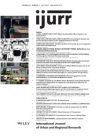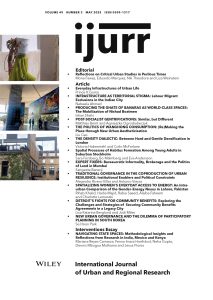Why does seemingly innocent wanghong (online celebrity) consumption—recording appreciation for a place and sharing photos of it on social media platforms—cause neighbourhood changes and instigate exclusionary pressures called ‘fashionable people phobia’? Following a critical analysis of this trend in Dongshankou, Guangzhou, I argue that a new urban aestheticization process is under way in the digital age, revealing the emergence of a new cultural class in China. This phenomenon is a product of China’s domestic digital ecosystem, which produces preferred forms of new urban aesthetics through the power of digital platforms in virtual space, resulting in conflicting cultural representations of Dongshankou in virtual and urban spaces. Due to the interrelated dynamics of digital and urban spaces, the urban transformation of Dongshankou manifests as a new form of urban development mediated by digital technologies rather than gentrification. My argument is based on a comparative analysis of gentrification and the ‘fashionable people phobia’ phenomenon, which found that the exclusionary pressures are based more on cultural questions around aesthetics than on socioeconomic status change—a result of China’s middle-class identity being represented by cultural tastes that depoliticize the importance of social classes.
Details
Written by:
Liu Cao
Digital Object Identifier (DOI)
https://doi.org/10.1111/1468-2427.13315
About DOI

